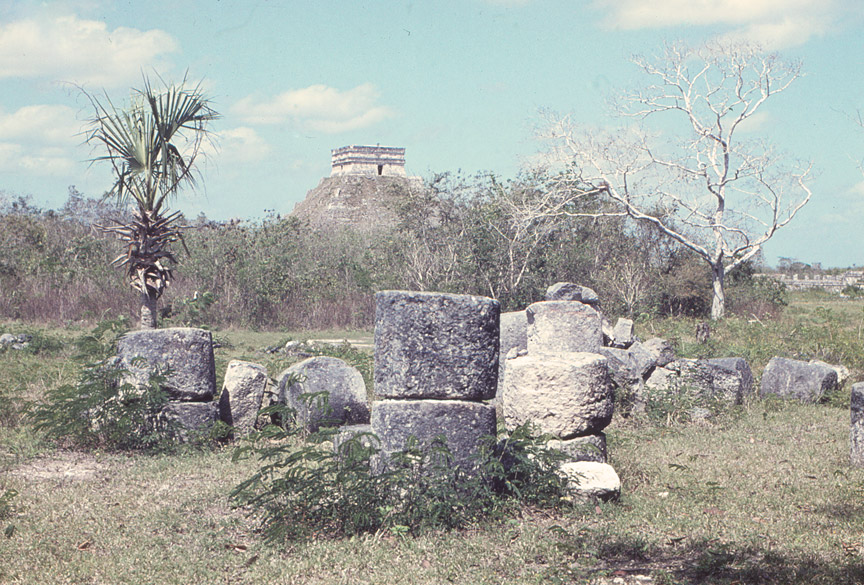

Chichén Itzá
Photos taken in 1962

the archaeological site
Chichén Itzá, most important city of the Maya peoples, now an archaeological site, 29 km (18 mi) southwest of Valladolid, Mexico, in the northern part of the Yucatán Peninsula. The name, meaning "Mouth of the Wells of Itzá," is derived from the Itzá tribe of Mayan Native Americans that formerly occupied it and from the two natural wells that supplied the city with water; the religious and cultural life of the city was centered on those wells.
the spring well
(human sacrifices were made to ensure a water supply)Chichén Itzá was founded early in the 6th century AD and abandoned about the year 670. Rebuilt some 300 years later, when the Itzá returned to the region, it became the most important city of northern Yucatán and a center of Mayan culture. The architecture of this period shows Toltec influence, but it is unclear how that influence gained hold in Chichen Itzá. The city finally fell in around 1200. Subsequently, the Itzá appear to have been a part of an alliance in the Postclassic center of Mayapán, which itself collapsed in the century before the Spanish conquest.
serpent god
The principal ruins cover an area of about 3 sq km (about 1 sq mi). The general structural type is that of the platform pyramid, ascended by means of broad stairways leading to vaulted chambers, the walls of which are covered with sculptured figures and hieroglyphic inscriptions or vividly colored paintings resembling the Aztec codices.
Mayan sculptured figure
Each prominent structure is known by a distinct name, such as the Ball Court that was used for symbolic religious games. It is formed of two parallel walls, each 83 m (274 ft) long and 9 m (30 ft) thick, standing 36 m (120 ft) apart. Projecting from each wall 7 m (25 ft) above the ground is a sculptured ring of stone in the form of two entwined serpents. During the game the players attempted to send the ball through the ring.
side wall of the ball court
Another important ruin is El Castillo, a large temple on a pyramidal mound 0.4 hectares (1.0 acre) in area and rising to a height of 30 m (100 ft), with staircases leading up on four sides to the temple of Kukulcan at the top.
Temple of the Warriors as seen from the top
of the temple of Kukulcan
(notice the flatness of the landscape)The Palace or Nunnery (Casa de las Monjas), the Sacred Well, the Temple of the Warriors, and the Caracol or Round Tower, probably an astronomical observatory, are among the other notable ruins.
Mayan Arch with Caracol in background
Close view of Round Tower
Text from Microsoft Encarta
More Mayan Art
rows of skulls
ball court
at the end of the ball court
serpent head
wall art
blocks in disarray
carved figure
Mayan warrior
Jaguar?
warrior
Chac-Mool character
serpent God